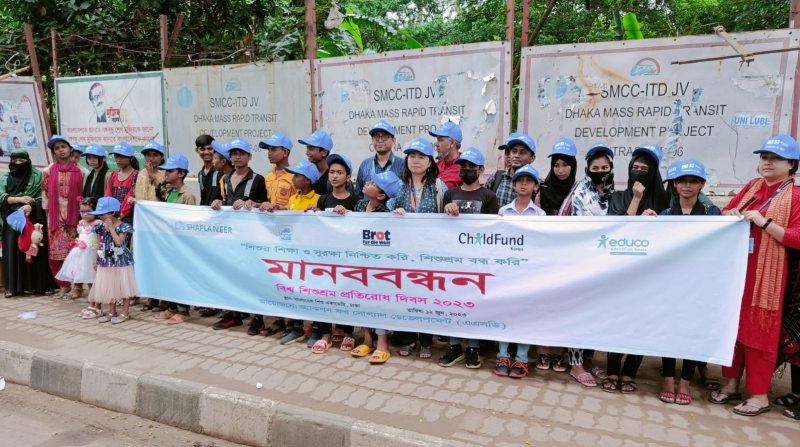News update
- EU’s Ocean Leadership Faces Test as Treaty Clock Ticks |
- OIC Condemns Ecuador’s Opening of a Diplomatic Office in Al-Quds |
- No escape, death follows families in Gaza wherever they go |
- Armed forces' magistracy powers extended by 60 days |
- Hamid's departure: Body formed, Kishoreganj SP withdrawn |
Reduce poverty and disparity to combat child labour
Staff Reporter
Human rights
2023-06-12, 6:50pm

Representatives of Government and non-government organisations on Monday underlined the need to reduce poverty and inequality in a bid to combat child labour.
Speaking at a discussion meeting, they identified poverty and disparity as root causes for child labour saying that budget allocation in social protection segment should be increased to combat the underage labour.Action for Social Development (ASD), Shapla Neer and Educo- Bangladesh, all the non-government organisations, jointly organised the meeting at Bangladesh Shishu Academy auditorium to mark the World Day Against Child Labour.Presided over by ASD Executive Director MA Karim, the meeting addressed by Md. Bellal Hossen Sheikh, Director (Admn) of the Department of Labour, Uchiyama, Country Director of Shapla Neer, senior journalist Nikhil Chandra Bhadra, and Gul-E-Jannat Jeny, project officer of ASD.Besides the meeting, the organisations also formed human chain and arranged art competition, award distribution and cultural events to mark the day.The speakers informed the meeting that more than 1.4 million children in Dhaka alone are engaged in hazardous labour.Referring to data of Bangladesh Bureau of Statistics (BBS), they informed the meeting that that until March 1, 2016, there were about 3.4 million working children in Bangladesh. Among them, approximately 1.7 million children were engaged in child labour. The rest of the children were not approved for work.Among the working children, 1.28 million were engaged in hazardous work, and 260,000 children were involved in extremely hazardous work. However, the actual number is believed to be much higher, they added.The speakers demanded taking effective measures to protect children from harmful labour and ensure their well-being and health.They noted that despite child labour being prohibited by law, children are still employed in different sectors including agriculture, garment factories, public transportation, brick kilns, housing, food shops and various business establishments.

